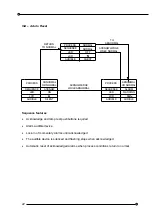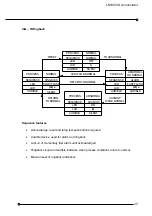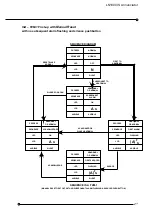
LN1000 IS Annunciator
15
SECTION 5 MECHANICAL DETAILS
Alarm Chassis
The annunciator consists of a stainless steel case with integral card rails.
The LN1000-12 is a single level unit, fitted with a LN1000-SC Sequence Card and up to six
LN1000-AC Alarm Cards.
The LN1000-32 is a double level unit, fitted with up to eight LN1000-AC Alarm Cards on the
upper level, with an additional eight LN1000-AC Alarm Cards and a LN1000-SC Sequence
Card on the lower level.
The cards slide into the card rails and push into the connector mounted on the backplane.
Each card is polarised to prevent incorrect assembly and are simple to remove and replace
without the aid of specialised tools.
Fascia Panel
The fascia panel is high impact resistant polyurethane, with a printed polyester membrane
including transparent windows to view the legends and displays. The internal pushbuttons
are attached to the rear of the fascia connected by a ribbon cable to the Sequence Card.
The fascia is removed by unfastening the retained screws, and lifting the front panel down
until it is held on the retaining straps
Alarm Cards
Each two-channel alarm card is fitted with an LED and a Liquid Crystal Display (LCD) for
each channel.
The LED follows the normal alarm sequence and the LCD indicates the sequence, field
contact status, first-up and inhibit state of the alarm channel.
To identify each alarm way when the system is in use traffolyte legends are used, these are
located in the front panel above the upper channel and below the lower channel.
Sequence Card
The Sequence Card assembly contains the pushbuttons for controlling the stages in the
alarm sequence and system outputs to control external audible alarms and other related
control equipment.
Panel Mounting
The standard annunciator enclosure is designed for panel mounting. The fascia and the case
to panel seal are protected to IP65.
The unit is supplied with a rear cable housing to aid installation. This is removable to facilitate
drilling and for mounting the enclosure.
It is recommended that annunciators are installed in dry locations protected from corrosive
atmospheres or direct sunlight
















































